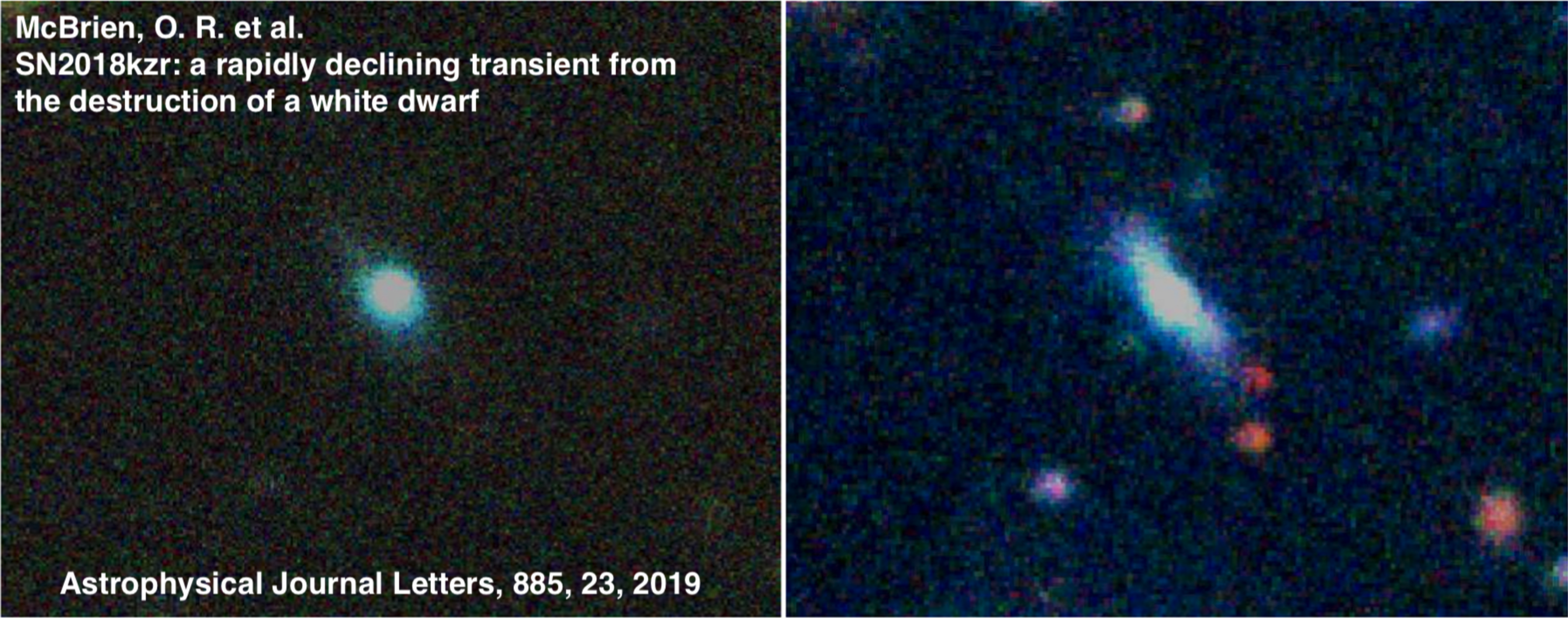
click on a recent news item to read more
The Release of PESSTO SSDR4
PESSTO SSDR4 has now been released via the ESO Science Portal and includes all EFOSC and SOFI spectra and SOFI images from the full 7 years of PESSTO and ePESSTO operations; April 2012 to April 2019. Also included is an updated version of the transient catalogue covering the same time period. In total the entire data-set comes to 45GB of reduced data-products.
The release comprises of 2323 unique transient sources including supernovae, galactic-novae, tidal disruption events and observations of the first kilonova ever discovered (AT2017gfo). Alongside observations used for spectral classification of many of these transient sources, rich time-series data-sets can be found for 337 select science targets (3748 spectral frame in total).
PESSTO time-series data-set for SN2017cfo; an unusual Type II supernova classified by PESSTO. The plot shows the first spectrum has a hot blue continuum even at 14 days after the estimated explosion epoch. The 4 subsequent EFOSC Gr13 spectra acquired during a follow-up campaign illustrate its transformation to a type II, with strong hydrogen lines visible at z = 0.042. The bottom panel presents a rendering of one of the spectra in 2-dimensions (wavelength in the left-to-right plane and along the slit from top-to-bottom). The sky-lines visible in the 2D frames have clearly been successfully removed from the fully-reduced spectra by the PESSTO data-reduction pipeline.
The release description for PESSTO SSDR4 can be found here and it’s possible to access the data via the ESO Science Portal or programmatically.
100 science papers from PESSTO and its successor surveys
PESSTO and its successor surveys have reached 100 published, refereed science papers. The latest 3 papers to bring us to 100 have just been published, on two long gamma ray burst and a plausible candidate for the first neutron star - white dwarf merger.
Owen McBrien, a PhD student at Queen’s University Belfast lead an ApJ Letter on the unusually fast declining transient SN2018kzr. It is the fastest declining transient that either PESSTO or ePESSTO has followed other than the kilonova AT2017gfo. It was also quite luminous, meaning a combination of low ejecta mass and a central powering source are required to explain the remarkably fast fade and its peak brightness. A plausible explanation is the formation of a magnetar during the merger of a white dwarf and a neutron star, although accretion induced collapse of a white dwarf is also possible. The ePESSTO spectra show a chemical composition compatible with the destruction of a white dwarf.

The other two papers are on long gamma ray bursts. Andy Melandri led the ePESSTO GRB science team with a paper on another identification of an emerging supernova in long GRB detected by Fermi at the rather large redshift of t z = 0.33. This is one of the few high redshift SNe for which spectroscopic identification of the type Ic supernova and a host galaxy analysis have been possible.
Finally, in a paper published in Nature the MAGIC collaboration detected the highest energy photons ever from a GRB, in the teraelectronvolt range (1012 eV). The remarkable emission from GRB190114C is associated with the afterglow and is explained by inverse Compton scattering of photons by high energy electrons. ePESSTO contributed to the multi-frequency campaign on GRB 190114C, which showed that such conditions for TeV emission may be typical for GRBs and that inverse Compton emission may be more commonly produced than previously thought.
a few of the most recent PESSTO papers ...

